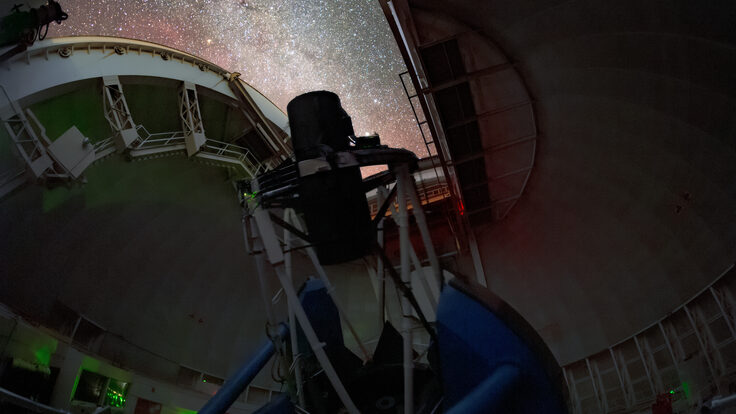Neutrinos: a gateway to new physics
Nature provides three kinds of neutrinos. In the last ten years, physicists have gathered increasingly strong evidence for neutrino oscillations, the transformation of one kind of neutrino into another one. Studying these oscillations in more detail, scientists hope to learn more about the neutrinos' masses and the role of these ghost-like particles in the evolution of the universe.
|
A crucial quantity related to the mathematical description of these oscillations is the mixing angle θ13 (pronounced theta-one-three). Its value is the gateway to understanding whether neutrinos exhibit CP violation, which explains why matter and antimatter behave in slightly different ways. Theoretical models predict that the value of θ13 is nonzero, but current experiments have had no success at pinpointing the actual value. Scientists have proposed new experiments to determine θ13 and to explore CP violation.
In the last five years, the number of papers with θ13 in the title has grown rapidly (see chart). There are 81 papers with such a title in the spires database, and two of these papers already have over 50 citations, proof that θ13 has become a hot topic in neutrino research.
Heath O'Connell, Fermilab
Click here to download the pdf version of this article.







